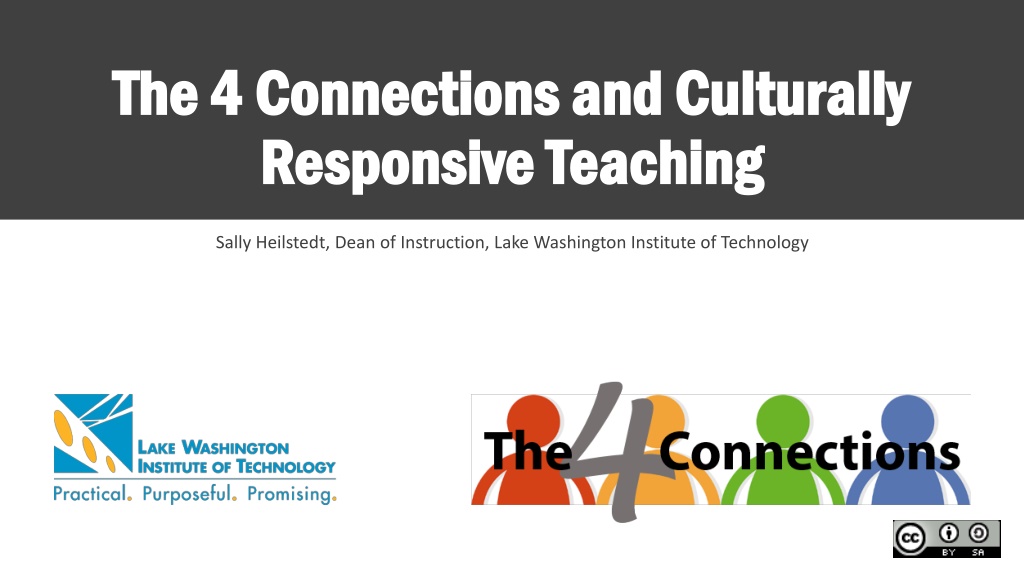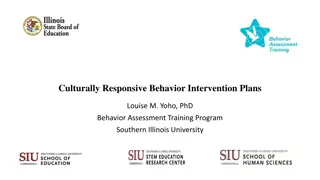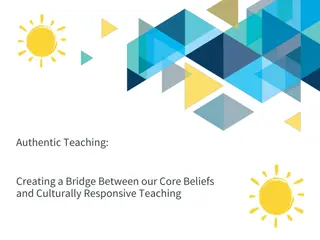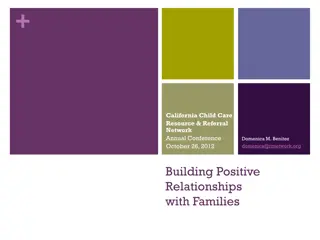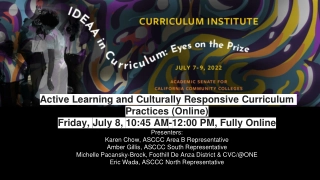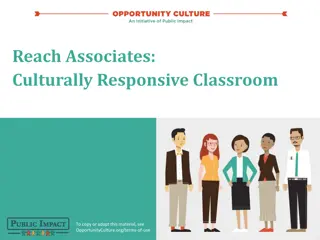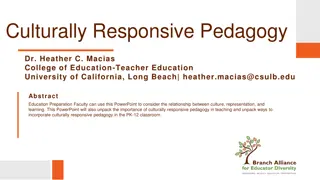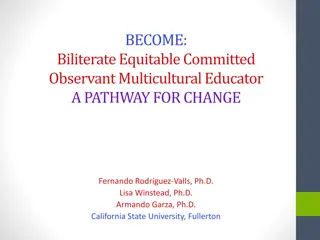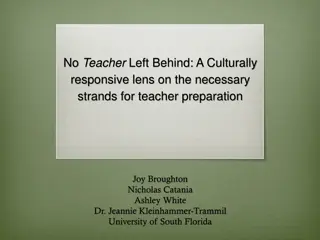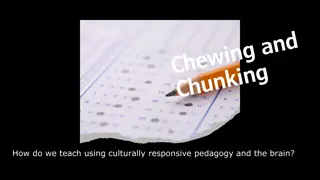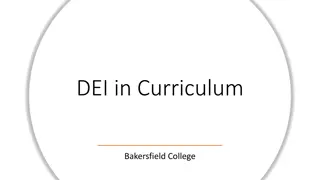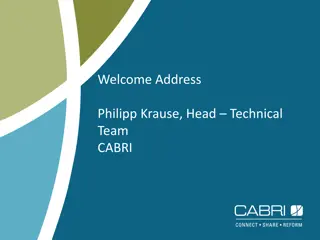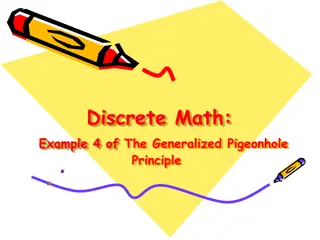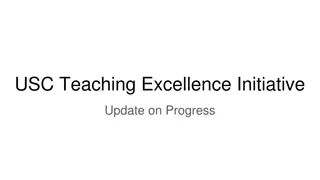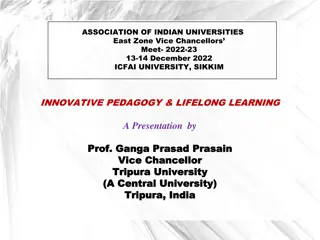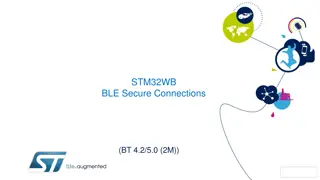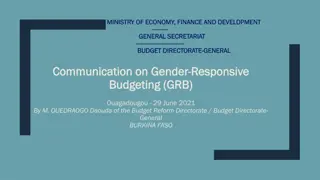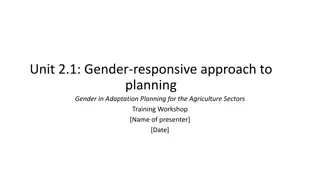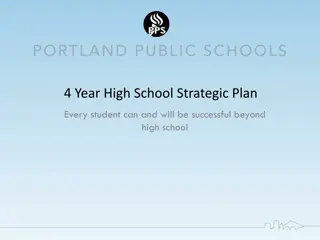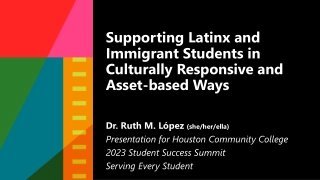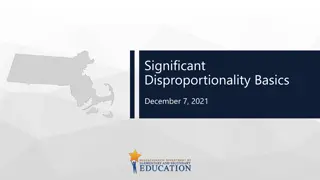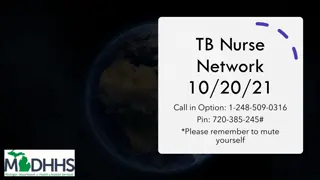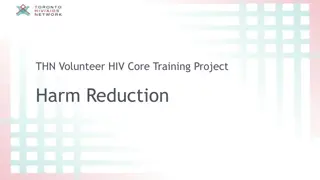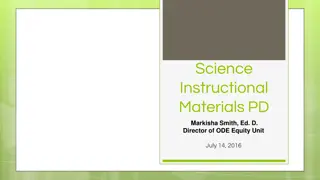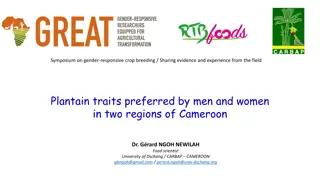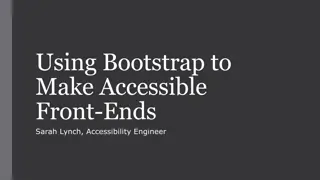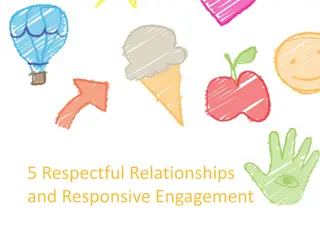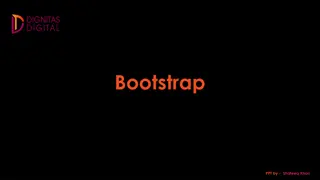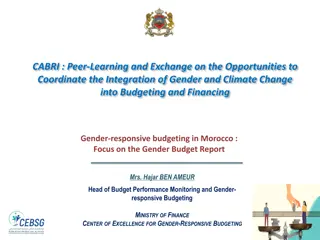Culturally Responsive Teaching: The 4 Connections Approach
Sally Heilstedt explores culturally responsive teaching through the 4 Connections model, emphasizing the importance of acknowledging indigenous lands, building a welcoming environment, and connecting with students through interactions and data analysis to improve educational outcomes for all.
Download Presentation

Please find below an Image/Link to download the presentation.
The content on the website is provided AS IS for your information and personal use only. It may not be sold, licensed, or shared on other websites without obtaining consent from the author. Download presentation by click this link. If you encounter any issues during the download, it is possible that the publisher has removed the file from their server.
E N D
Presentation Transcript
The 4 Connections and Culturally The 4 Connections and Culturally Responsive Teaching Responsive Teaching Sally Heilstedt, Dean of Instruction, Lake Washington Institute of Technology This work is licensed under a Creative Commons Attribution-ShareAlike 4.0 International License
We acknowledge that we gather today on the traditional and current lands of many indigenous peoples. LWTech s physical campus is located on the lands of the Coast Salish, Stillaguamish, and Duwamish people . We honor the land itself and the people who have stewarded it since time immemorial and who continue to do so today. Let this land acknowledgement be an opening for all of us to learn more and determine ways to join in decolonial and indigenous movements for sovereignty. Welcome & Land Welcome & Land Acknowledgement Acknowledgement https://www.duwamishtribe.org/land-acknowledgement https://native-land.ca/resources/territory-acknowledgement/ https://nativegov.org/a-guide-to-indigenous-land-acknowledgment/
[Review] The 4 Connections Description Data [Discuss] Changing Conditions [Plan] Next Steps with CRT Session Agenda Session Agenda Before we begin: [Connect] Introductions in Breakout Groups Name and Position Part of my identity that helps me be a better educator is This work is licensed under a Creative Commons Attribution-ShareAlike 4.0 International License
The 4 Connections The 4 Connections Description & Data
The 4 Connections: Description Interact with Students by Interact with Students by Name Name Learn your students' names and begin using them on the first day of class and throughout the quarter. Check In Regularly Check In Regularly Pay attention to student behavior and track student progress. Empathize with students. When a student is struggling, intervene. Refer students to campus resources. Schedule One Schedule One- -on Meetings Meetings At the beginning of the quarter and throughout, schedule required one-on-one meetings with students. Practice Paradox Practice Paradox Structure your course clearly. Communicate your expectations regularly. And, then, be reasonably flexible when students come to you with concerns. on- -One One This work is licensed under a Creative Commons Attribution-ShareAlike 4.0 International License
The 4 Connections: Data Pass Rates by Race/Ethnicity Race/Ethnicity African American Alaska Native, American Indian, Pacific Islander Asian Hispanic White 2014-2016 71.17% 79.00% n (dupl) 319 117 2016-2018 88.00% 94.67% n (dupl) 329 148 92.17% 86.33% 90.67% 941 388 3764 94.33% 91.67% 93.34% 1168 411 3817 This work is licensed under a Creative Commons Attribution-ShareAlike 4.0 International License
Changing Conditions Changing Conditions Is the 4 Connections framework enough?
The persistent gap in pass rates for black students AND The use of the 4 Connections as a checklist Inspiration for Inspiration for this Session this Session This work is licensed under a Creative Commons Attribution-ShareAlike 4.0 International License
One of My Key Takeaways: Are we asking students to adapt to less-than-ideal (even harmful) conditions? OR Are we changing conditions in order to support (even supercharge) learning? Yoshiko Harden s Yoshiko Harden s Presentation Presentation This work is licensed under a Creative Commons Attribution-ShareAlike 4.0 International License
1. In what ways does the 4 Connections change conditions? 2. In what ways does the 4 Connections leave conditions intact/just work around them? Discussion Discussion Come back with one response to share for each question. This work is licensed under a Creative Commons Attribution-ShareAlike 4.0 International License
Discussion Notes: September Session Changed: Improves relationships with teacher and with other students Left Intact: Assessments/way we assess the students; policies Changed: Attitude of mutual respect (especially of student by teachers) Left Intact: Not fully closing the gap improving but not all the way Changed: One-on-one early in quarter (vs. end of quarter) set a tone and encouraged motivation and retention Left Intact: Works better with smaller classes (e.g., 15); lack of connection with folks other than lead instructor; helps on individual level but not systemic; lecture, high stakes testing, ways of teaching not changed Changed: Level/amount of interaction increases; increases faculty time commitment (e.g., 20 hours for one set) Left Intact: How society interacts with students; peer-to-peer relationships
Discussion Notes: November Session Changed: How students view the instructor personal/mentor relationship vs. authority more approachable; builds community in the classroom, see instructor interacting, everyone learns everyone s names, students engage with one another and the teacher more; adjustments made with reach out to individuals that includes empathetic messaging little nudges helpful to folks; using names when sending notes more likely to respond; one-on-one meetings at the beginning makes it easier to practice paradox know who they are and their needs, easier to be flexible when something comes up; giving students the benefit of the doubt; easier for student to approach professor when they have a problem less avoidant behavior; time builds rapport and trust
Discussion Notes: November Session Left the same: Assessments, weekly exercises; systemic problems what happens outside the classroom and barriers in other areas of the college; can t solve problems at home, though we can be more accommodating; involvement with students outside of class; students responsibility; burden is still on the students to talk with us about issues they may not want to talk about with us; some obstacles are still in place actively removing them 4 Connections does some of this but not all
Quote about Student Success Curiosity comes out of a sense of safety, rigidity out of being vigilant to threats. Dr. Sue Johnson, summarizing research conducted by Mikulincer, Florian, and Weller (1993) This work is licensed under a Creative Commons Attribution-ShareAlike 4.0 International License
Intentional Relationship Building + Intentional Teaching Strategies The 4 Connections The 4 Connections and CRT and CRT This work is licensed under a Creative Commons Attribution-ShareAlike 4.0 International License
Next Steps Next Steps What can we do to further change conditions?
Culturally Responsive Teaching (CRT) Understanding and constructing culturally respectful and motivationally aligned instructional practices. Margery B. Ginsberg and Raymond J. Wlodkowski, Diversity & Motivation: Culturally Responsive Teaching in College "Using the cultural knowledge, prior experiences, frames of reference, and performance styles of ethnically diverse students to make learning encounters relevant to and effective for them. It teaches to and through the strengths of these students. Geneva Gay, As quoted in French, Patrice B. (2019). "Culturally Relevant Practice Frameworks and Application in Adult Education," Adult Education Research Conference. https://newprairiepress.org/aerc/2019/papers/27 This work is licensed under a Creative Commons Attribution-ShareAlike 4.0 International License
Culturally Responsive Teaching (CRT) An educator s ability to recognize students cultural displays of learning and meaning making and [to] respond positively and constructively with teaching moves that use cultural knowledge as a scaffold to connect what the student knows to new concepts and content in order to promote effective information processing. All the while, the educator understands the importance of being in relationship and having a social-emotional connection to the student in order to create a safe space for learning. Zaretta Hammond, Culturally Responsive Teaching and the Brain: Promoting Authentic Engagement and Rigor Among Culturally and Linguistically Diverse Students This work is licensed under a Creative Commons Attribution-ShareAlike 4.0 International License
Culturally Responsive Teaching (CRT) Designing instruction and promoting classroom communities that intentionally honor and integrate students cultural identities and lived experiences. LWTech Working Definition This work is licensed under a Creative Commons Attribution-ShareAlike 4.0 International License
A Guide to CRT A Guide to CRT Strategies Strategies bit.ly/LWTechCRT This work is licensed under a Creative Commons Attribution-ShareAlike 4.0 International License
Thank you! Thank you! This work is licensed under a Creative Commons Attribution-ShareAlike 4.0 International License
